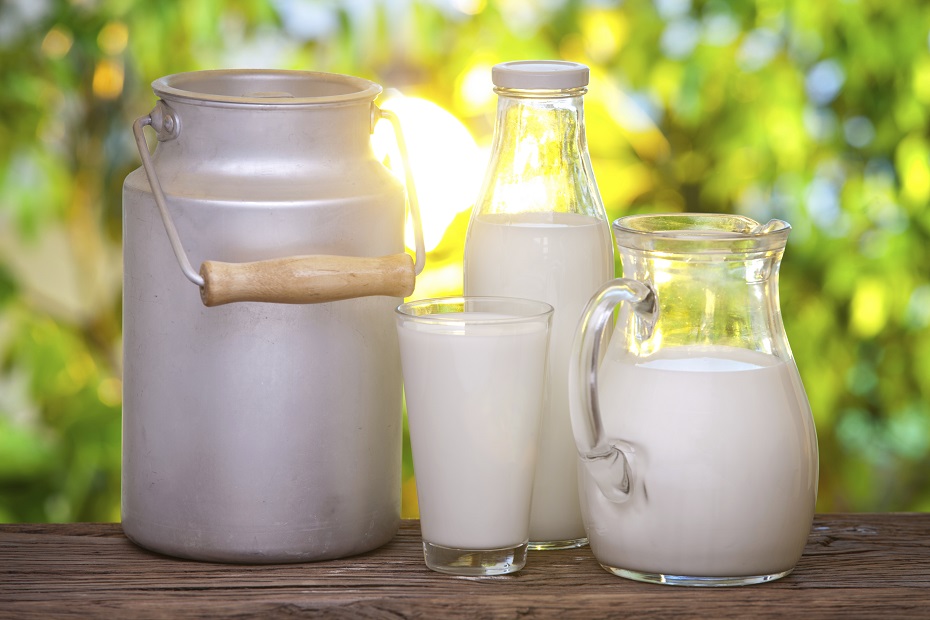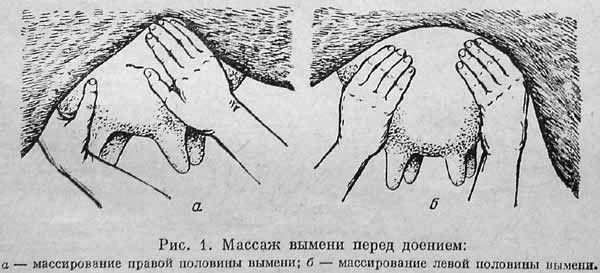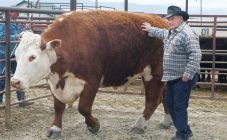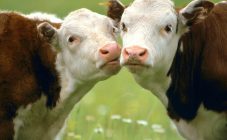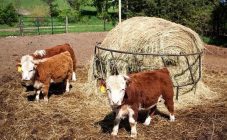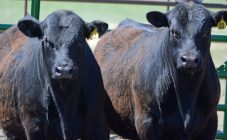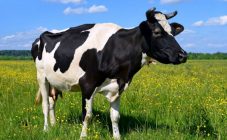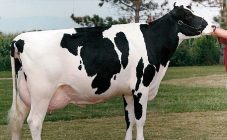Content:
Many novice farmers do not know how to distinguish dairy cattle by their appearance. Important questions are how much milk a cow gives per day and how to increase milk yield at home, as well as how to feed a cow so that the milk is fatty and with a good indicator of protein content. All this is below in the article.
Breeds with good milk production
The milk production of a cow largely depends on its breed. If the breeder does not have the opportunity to get acquainted with the production line of an individual, it is important to pay attention to the characteristics of its body.
External indicators indicating a good dairy breed:
- high and strong legs;
- small head size;
- long body;
- small stature;
- straight back without bulges;
- the stomach should not sag up to the knees;
- the udder is round and smooth without damage.
The behavior of these breeds is also different. Often, dairy cows stay in one place for a long time; you can make them move on only after they have eaten all the available grass. Also, such cows do not like to perform long exercises, so it is not recommended to drive them over long distances.
General information about cow's milk
Beginning livestock breeders need to know important information about a cow's dairy performance in order to calculate ROI and production quantities. Some believe that cows give milk all year round, but this opinion is erroneous. For the first time, a heifer has milk after the birth of the first calf, at about 1.5-2 years. Later, the cub is removed, and the animal continues to be milked, because of which the body begins to produce the product on an ongoing basis. Lactation lasts 9-10 months, and then gradually decreases towards the next calving. Before giving birth, the milk may disappear altogether. The milk flow mechanism restarts with the birth of a calf.
How many years does a cow give milk? This often depends on the owner himself. An animal can give milk until it dies, but it is important to take into account that performance changes with age: the older the individual, the less milk from it.
How much milk does a cow give per day on average per day
On average in Russia, an ordinary cow gives 8-15 liters per day. Dairy breeds can produce up to 30 liters per day. The farmer receives maximum milk production between calving and the next pregnancy of the animal. The daily milk yield depends on the following factors:
- breed genetics;
- conditions of detention;
- time of the year;
- the age and weight of the animal;
- diet;
- ecology of the region;
- the health status of the cow;
- compliance with milking rules;
- calving season;
- psychological environment on the farm.
Experts note that milk productivity increases significantly by the fifth calving of the animal. Milk yield depends on the diet, so the cow should receive hay, straw, cereals, compound feed, premixes and fatty inclusions. It has also been observed that animals calving in winter produce 10% more milk than those who give birth in summer.
The normal rate of milk yield per year is 5-6 thousand liters. This means that the cow should produce 15-16 liters per day. If the amount of milk is different from the norm, the breeder needs to take action. It is appropriate to show the animal to the veterinarian to determine the cause of the decrease in milk yield.
The state of health is also important, since the sick individual produces little milk, so you need to regularly conduct a veterinary examination of all livestock. Disease and inflammation can provoke a complete cessation of milk flow.
External signs of diseases:
- Mastitis is detected by a warming and reddening of the udder, and clots may appear in the milk.
- Foot and mouth disease is characterized by the formation of ulcers on the nipples, during milking, pus flows out with the product.
- Cracked nipples cause severe pain to the animal and reduce milk flow.
- When the udder swells, it becomes larger, but empty.
How to increase the milk yield of a cow at home
It has been noticed that cows from caring and responsible livestock breeders can give up to 20 liters of milk per day. When deciding to increase milk yield artificially, the animal owner must take into account all factors, namely the quality of the product and the health of the cow.
There are milking rules that help increase milk production. After insemination, the heifers are gradually reduced milking, allowing the body to reorganize to bear a calf. The process is completely stopped when the milk yield is only 2 glasses of milk per day. After calving, milking begins gradually, and the colostrum obtained at the beginning is given to the cub. To increase milk yield, the cow is milked 3 times a day.
It is worth remembering that during the winter months, almost all breeds of cows produce less milk. You can increase milk yield with the help of nutrition: cows are given more succulent feed, they are often watered and walked in the fresh air.
It is believed that the best performance is in those cows that were 1.5-2 years old at the time of first calving. Previously, it is not worth inseminating the heifer, as the udder is not yet well formed for milking. If the cow gave birth at an early age, it is worthwhile to carefully approach the breeding, and the calf should develop the udder. After weaning, milking becomes a daily routine.
How to increase protein in cow's milk
Normal protein levels in cow's milk are 2.8-3.6%.The amount of protein is 50% dependent on the breed, but care and maintenance, nutritional value, health and season of the year also have an impact on its level.
- It is important to optimize the digestion of the animal - to create a favorable microflora in the rumen.
- Increase the total amount of feed fed.
- Diversify your diet.
- Feed the cow only good quality food.
It has been proven that with proper grain handling you can increase the amount of protein in milk. Crushed, pressed, granulated and steamed grains are suitable for feeding the cow. Oatmeal should be avoided. It is important not to exceed the recommended feed rates, otherwise it will negatively affect milk.
Fat content of milk in a cow
It is believed that the fatter the cow's milk, the tastier it is. The fat content of store milk is indicated on the package; often the product is sold skimmed. How to determine the fat content of natural milk at home? You need to take a clean, dry jar or glass into which you pour some milk. The distance from the bottom to the liquid level should be 10 cm. Next, place the vessel in a dark, dry place at room temperature for 8 hours. After the specified time, cream will begin to form on the surface, and the fat content is determined by their amount. The layer of cream is measured with a ruler, the number of centimeters indicates the percentage of fat.
How to feed a cow so that milk is fatty
Experienced livestock breeders note that in order to obtain fat and good milk yield, it is important to provide the cow with a sufficient amount of coarse fiber. Hay should be 20% of the total dry feed. A decrease in roughage and an increase in concentrates will lead to deterioration of milk, therefore it is important to respect their proportions.
In addition to nutrition, it is important to optimize the conditions for keeping cows. An increase in air temperature and humidity will reduce the fat content of the product, while coolness will increase it. Excessive nutrition can also negatively affect milk. It is important to regularly take the cows for a walk, even in winter, they should be outside the walls of the barn for several hours a day.
The milk yield of a cow largely depends on its breed. You can increase milk yield with a balanced diet rich in fiber, vitamins and minerals. Also, performance depends a lot on care. Responsible and clean owners give more milk. If the milk yield of the cow has decreased, it needs to be shown to the veterinarian, perhaps diseases are developing, due to which lactation may stop altogether.
